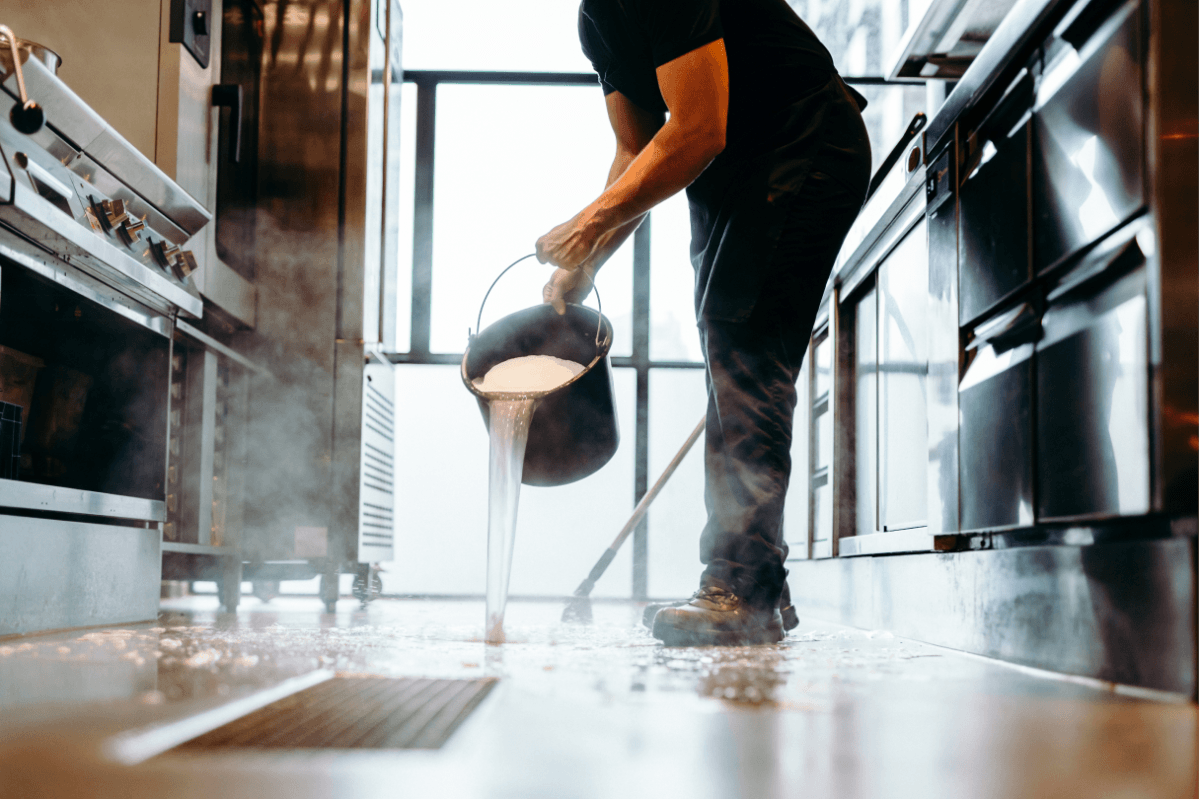
Commercial Kitchen Cleaning - Free Standard Operating Procedure Template
Keeping your commercial kitchen clean is crucial for the safety of your customers and for the maintenance of your business's reputation.
Below is an example standard operating procedure that you can tailor to the specific needs of your commercial kitchen:
[Insert Company Logo]
Standard Operating Procedure (SOP) Title: Commercial Kitchen Cleaning Procedure
Document No: CKCP-001 Revision No: 1.0 Effective Date: [Date] Supersedes: N/A Page: 1 of 3
1.0 Purpose
The purpose of this Standard Operating Procedure (SOP) is to provide guidelines for cleaning a commercial kitchen in a manner that maintains the highest level of hygiene, sanitation, and safety standards. This SOP can be tailored by businesses to suit their specific location and requirements.
2.0 Scope
This SOP applies to all staff members responsible for cleaning and maintaining a commercial kitchen in [Business Name]. It covers the cleaning of all surfaces, equipment, utensils, and floors.
3.0 Responsibilities
3.1 Kitchen Manager: Ensure staff members follow the SOP and provide necessary training.
3.2 Cleaning Staff: Follow the SOP for cleaning and maintaining the commercial kitchen.
4.0 Materials and Equipment
- Cleaning supplies: detergent, degreaser, sanitizing solution, glass cleaner, etc.
- Cleaning tools: brushes, scrubbers, sponges, cloths, mop, broom, dustpan, etc.
- Personal Protective Equipment (PPE): gloves, apron, safety goggles, non-slip shoes, etc.
- Waste disposal bags and containers
5.0 Procedure
5.1 Daily Cleaning Tasks
5.1.1 Prepare for Cleaning
- Gather necessary cleaning supplies and equipment.
- Put on appropriate PPE.
5.1.2 Clean Cooking and Preparation Surfaces
- Remove any remaining food debris and grease.
- Apply detergent or degreaser and scrub surfaces.
- Rinse with clean water and sanitize according to local regulations.
- Wipe down with a clean cloth and let air dry.
5.1.3 Clean Equipment and Utensils
- Disassemble equipment as required.
- Clean all parts with detergent, rinse with clean water, and sanitize.
- Reassemble equipment and ensure proper functioning.
- Clean utensils using a dishwasher or by hand.
5.1.4 Clean Floors
- Sweep and remove any debris.
- Mop the floor using a cleaning solution and hot water.
- Allow the floor to air dry or use a wet vacuum to speed up drying.
5.2 Weekly Cleaning Tasks
5.2.1 Clean Exhaust Hoods and Filters
- Turn off and unplug equipment.
- Remove and clean filters with a degreaser.
- Clean the interior and exterior of the hood.
- Replace filters and ensure proper functioning.
5.2.2 Deep Clean Grills, Ovens, and Fryers
- Turn off and unplug equipment.
- Remove and clean any removable parts.
- Scrape and scrub away grease and debris.
- Rinse with clean water and sanitize.
- Reassemble equipment and ensure proper functioning.
5.3 Monthly Cleaning Tasks
5.3.1 Clean Refrigerators and Freezers
- Remove all food and store it in a temporary cooler.
- Unplug the unit and clean shelves, drawers, and surfaces with a detergent.
- Rinse with clean water and sanitize.
- Dry all surfaces and replace food items.
5.3.2 Inspect and Clean Grease Traps
- Check grease traps for buildup and clean as needed.
- Consult manufacturer guidelines for proper cleaning and maintenance.
5.4 Waste Disposal
- Dispose of waste in designated containers.
- Clean waste containers regularly to avoid foul odors and pest infestation.
6.0 Records and Documentation
- Maintain a cleaning schedule and checklist to track daily, weekly, and monthly tasks.
- Document any maintenance and repair needs and report to the kitchen manager.
7.0 References

